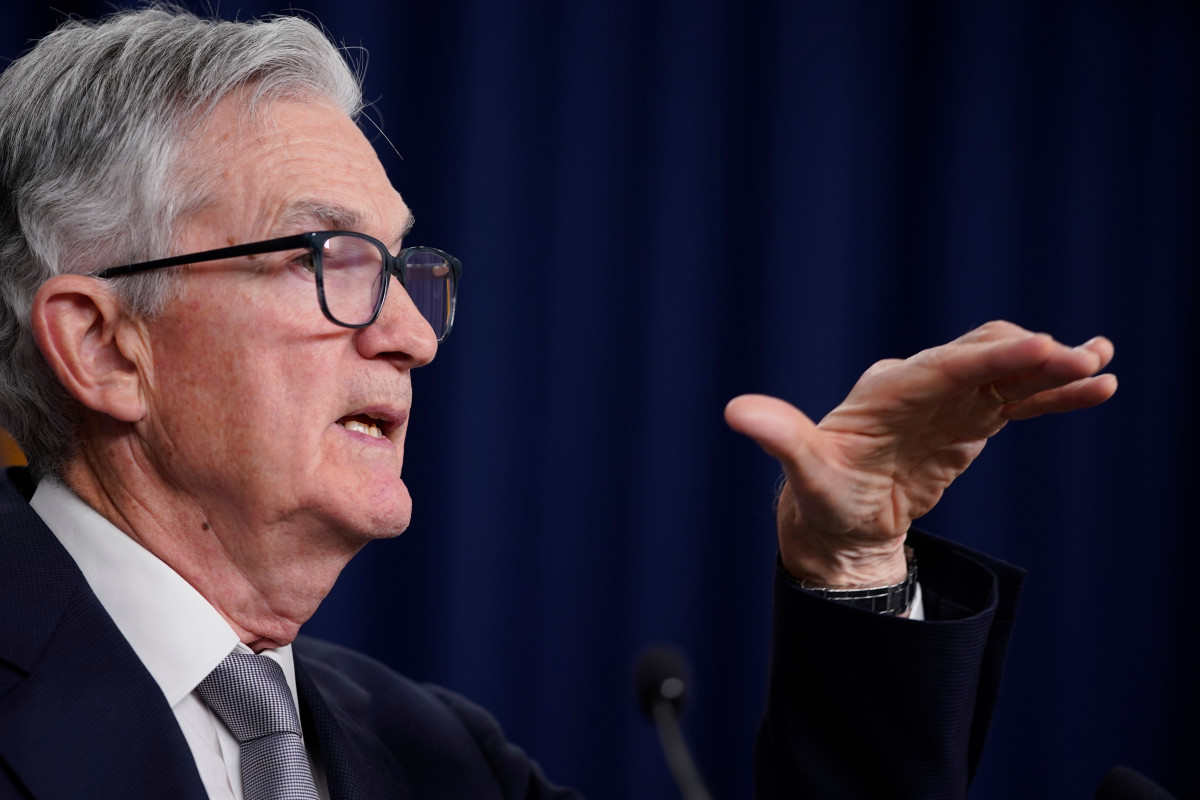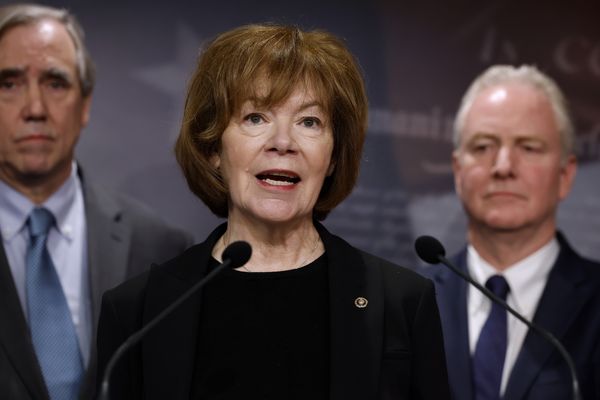
Federal Reserve Chairman Jerome Powell might be the happiest man on Wall Street Tuesday, after a November inflation report confirmed the trend of softer consumer-price pressures while providing just enough ammunition to support his cautious rate outlook.
Powell has been at pains to warn investors over the past few months that bets on a series of 2024 rate cuts, pegged to a powerful rally in Treasury bonds and fading inflation prospects, are premature.
The central bank chief will speak to the media tomorrow afternoon following the Fed's two-day policy meeting in Washington.
Last week's jobs report, which showed a stronger-than-expected gain of 199,000 new hires in November with upside moves of 4% in average hourly earnings, provided some support to his caution.
Today's inflation report, which shows the consumer price index largely stuck in the 3% range following declines earlier in the year, further supports his case.
Markets have largely ignored him, however, and pegged the odds of a March rate cut at nearly 50% even after Friday's jobs report, while pricing in at least five quarter-point reductions for the whole of the year.
The assumption behind the rate-cut expectation is that slowing GDP growth, cautious consumer spending and tanking energy prices will convince the Fed that it's tamed the inflation beast.
Related: S&P 500 rally facing key tests from bond sales and CPI ahead of Fed meeting
Fed gets cover for 'higher for longer' rates
All that might be true, but it's not confirmed yet, and November's inflation report will likely give Powell and his colleagues more than enough cover to repeat their "higher-for-longer" rate mantra well into the coming year.
"Knocking inflation down from last year’s highs is one thing; getting it to the Fed’s 2% target is another," said Chris Larkin, managing director for trading and investing at ETrade from Morgan Stanley.
"The Fed has been very clear they feel the risk of cutting rates too soon outweighs the risk of keeping them elevated for a longer period of time," he added. "Lower rates are still on the 2024 horizon, just not as near as some people may be hoping."
CME Group's FedWatch is starting to reflect that change, with the odds of a March cut, once pegged at high as 53.5%, retreating to 42% in the wake of the November reading.
Markets are still looking for the Fed to begin cutting rates in May, around 10 months after the central bank's last hike in July. That took the federal funds rate to between 5.25% and 5.5%, but the timing of cuts for now is largely a coin toss.
The most optimistic reading for 2024 rate cuts, meanwhile, puts the year-end federal-funds rate at between 4% and 4.25%, effectively eliminating one quarter-point reduction from the market's prior forecasts.
Related: Analyst's surprising S&P 500 prediction doesn't depend on Fed rate cut
Interest-rate rises still possible: Glenmede
"Heading into the new year, it’s still probably too early to definitively write off any more rate hikes for this cycle, as some external shock could disrupt inflation’s downward trajectory and necessitate further tightening," said Jason Pride, chief investment strategist at Glenmede.
"However, the question will likely center around how long the Fed keeps rates at these restrictive levels," he added. "The risk is that the Fed may need to keep rates elevated for longer than markets are currently expecting, if it hopes to keep the inflation bogeyman at bay for good."
That may be even more complicated than it first appears, according to Alex McGrath, chief investment officer for NorthEnd Private Wealth in Greenville, S.C.
He notes that even with the Fed's enormous progress on inflation, prices across the broad spectrum of consumer spending are still some 20% higher than 2021 levels.
"The real dilemma no one wants to talk about remains the health of the consumer," he argues. "The Fed's goal in fighting inflation was to grind the economy to a halt to bring prices back in line with their mission statement, and so far that has not come to fruition.
"At what point will consumer simply tap out?"
Inflation estimates return to pre-covid levels
The answer to that question could prove crucial in an economy powered by consumer spending. But data from the New York Fed yesterday and the University of Michigan's consumer sentiment survey last week suggest that inflation expectations are returning to pre-covid levels.
Along with a resilient job market and falling gas prices, that could help keep the consumer's head above water over the first half of next year, even if the Fed sticks to its vow of keeping rates "higher-for-longer" into the spring and beyond.
Related: Mortgage rates tumble as bond markets see lower Fed rates by early spring
Still, the Atlanta Fed's GDPNow forecasting tool suggests current-quarter growth has slowed markedly from the three months ended in October, and it suggests the world's largest economy is expanding at only a 1.2% clip.
That's perhaps enough to avoid recession but maybe not strong enough to weather the highest Fed rates in two decades, a gummed-up housing market, sky-high housing costs and historically high credit-card balances.
"Undoubtedly this is the Fed's most important hour: attempting to thread the needle between soft landing and cutting too soon only to see inflation return with a vengeance," argues McGrath of NorthEnd. "A rock and a hard place at best."
It's a place Powell has felt comfortable, however, for a very long time.
- Action Alerts PLUS offers expert portfolio guidance to help you make informed investing decisions. Sign up now.







